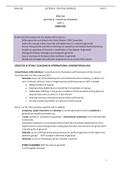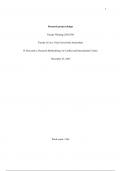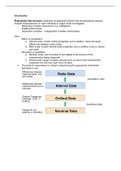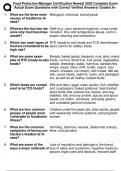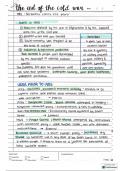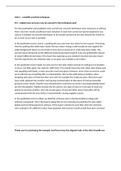PHONETICS AND
PHONOLOGY
GENERAL OVERVIEW
Phonetics and Phonology are the two primary linguistic disciplines concerned with speech
sounds – those sounds that are used by humans to communicate.
Both areas are mutually dependent. Phonetics describes the concrete, physical form of sounds
(how they are produced, heard and how they can be described), while phonology is concerned
with the function of sounds, that is with their status and inventory in any given language.
The two basic tasks of phonetics are the transcription and the classification of sounds, also
called phones in this context. The phone is therefore the basic unit of phonetics, and it refers
to the concrete sound substance as such.
There are three subdivisions in Phonetics:
a) Articulatory phonetics: the sound substance is described on the basis of the
articulatory properties. These refer to the human vocal tract (or to the speech
organs), illustrated in the next slide, and are used to describe and classify sounds
(related to Anatomy).
b) Acoustic phonetics: study of sound waves, and how the environment will have an
influence in the perception of sounds (related to Physics).
c) Auditory phonetics: study of how sounds are perceived by the human ear.
In this course, we will concentrate on articulatory phonetics and we will classify sounds
according to their articulatory properties.
Vocal tract (speech organs)
TRANSCRIPTION
Phones are represented by placing square brackets around the transcription:
e.g. dance [dɑ:ns] (British English) / [dæns] (American English)
Notation for spelling <dance>; individual letters <d>, <a>, <n>, <c>, <e>.
The most extended transcription model: the IPA (International Phonetic Alphabet), containing
a) symbols b) diacritics.
Symbols refer to the essential articulatory properties of each sound. Apart from familiar letters
taken from the Roman alphabet, (e.g. e, u, p, b, d, m) there are additional ones (e.g. ɪ, ə, ʊ, ð,
θ, ʃ, ʒ).
Diacritics (small marks added to symbols, e.g. [ɑ:], [b̥]) provide complementary information
showing modifications of the basic properties of the sound.
1
,CLASSIFICATION OF SOUNDS
Consonants: contact, vowels: no contact.
Traditionally, sounds are classified into consonants and vowels. Consonants are sounds that
are produced with a major obstruction in the mouth cavity.
e.g. [t] – direct contact between the tip of the tongue (active articulator) and the alveolar ridge
(passive articulator), so that the airflow coming from the lungs can leave the mouth cavity only
when the obstruction is removed:
Consonant [t]
Vowels are sounds that are produced without such obstruction. For example, in the case of
[iː], there is a gap within the mouth that is determined by the position of the tongue, and the
airflow can escape relatively freely:
Vowel [iː]
Another difference between consonants and vowels is that vowels are generally voiced, i.e.
the vocal cords (or vocal folds) are set vibrating by the outgoing airflow. Consonants, by
contrast, can be voiced or voiceless. The vocal cords are either far apart and do not vibrate, as
in the first consonant in fan, or they are relatively closed and vibrate as in van.
Voiced sounds
PHONEMES AND PHONOLOGY
Phonemes, in contrast to phones, are defined by their function within the language system.
Function: basically, meaning differentiation.
All sounds which have a meaning-differentiating function within a given language, are
considered phonemes within that language system. They are the smallest distinctive units of a
language system.
Phonemes are abstract, idealized units within our minds; in language use phonemes are always
realized as phones.
2
, Test: the minimal pair test, i.e. when a minimal difference in sound structure also causes a
shift in meaning.
e.g. [k] in cable and [t] in table. They constitute phonemes of English, indicated not between
square brackets but by the notation /k/ and /t/, i.e. between slashes.
Because a phoneme is an idealized, abstract unit, the description and classification of each one
takes the so-called ‘default allophone’ (for allophones see next slide). In general, the default
allophone is the one which is pronounced in isolation (not surrounded by other sounds).
ALLOPHONES
Some sound differences do not differentiate meaning: e.g. pronunciation of /l/ in the words lip
and pill.
They are informally called ‘clear’ and ‘dark’ /l/ and are two allophones (or allophonic variants)
of the phoneme /l/ in English.
Spanish example: pronunciation of /d/ in the initial and in the medial position in the word
dedo: two allophonic variants of the phoneme /d/ in Spanish.
DISTRIBUTION OF ALLOPHONES
Allophones do not occur in minimal pairs. Possibilities:
a) they never occur in the same environment (complementary distribution) (e.g. clear
and dark /l/)
b) free variation (generally in expressive function, e.g. that was cooool!).
We will use slashes (/…/) for phonemes (phonemic transcription), and square brackets ([…])
for allophones (allophonic transcription), in which we will focus on a small selection of
allophones in complementary distribution (modifications according to different phonetic
environments).
- Example of phonemic transcription: /lɪp/, /pɪl/ (only essential phonemes)
- Example of allophonic transcription: [lɪ̆p], [pʰɪɫ] (where specific allophones are
included)
PHONOLOGICAL SYSTEMS
The phonology of a language is also the inventory of its phonemes, i.e. the sum of all those
sounds that show distinctive (i.e. meaning-differentiating) phonetic differences.
Not all dialects of a given language show an identical set of phonemes.
Example from Spanish: casa and caza. Two different phonemes in the standard Peninsular
variety. But in some Andalusian or American Spanish varieties these words are pronounced the
same (homophones).
So, when describing a phonological system of a ‘language’, we have to specify the variety or
dialect we are referring to in order to be consistent in that description.
In the case of English, there are two well-known varieties: British and American English.
In this course we will describe standard British English. The general term for it is RP, standing
for Received (in an old sense of ‘generally accepted’) Pronunciation. Historically speaking, it is
an originally Southern dialect which later on became widespread in England.
The phonological system of RP has 24 consonants, 12 pure vowels (or monophthongs), and 8
diphthongs (or rather 7, as explained in the corresponding section).
Any variety is a good starting point for the description of other varieties by contrast.
SYLLABLES
3
PHONOLOGY
GENERAL OVERVIEW
Phonetics and Phonology are the two primary linguistic disciplines concerned with speech
sounds – those sounds that are used by humans to communicate.
Both areas are mutually dependent. Phonetics describes the concrete, physical form of sounds
(how they are produced, heard and how they can be described), while phonology is concerned
with the function of sounds, that is with their status and inventory in any given language.
The two basic tasks of phonetics are the transcription and the classification of sounds, also
called phones in this context. The phone is therefore the basic unit of phonetics, and it refers
to the concrete sound substance as such.
There are three subdivisions in Phonetics:
a) Articulatory phonetics: the sound substance is described on the basis of the
articulatory properties. These refer to the human vocal tract (or to the speech
organs), illustrated in the next slide, and are used to describe and classify sounds
(related to Anatomy).
b) Acoustic phonetics: study of sound waves, and how the environment will have an
influence in the perception of sounds (related to Physics).
c) Auditory phonetics: study of how sounds are perceived by the human ear.
In this course, we will concentrate on articulatory phonetics and we will classify sounds
according to their articulatory properties.
Vocal tract (speech organs)
TRANSCRIPTION
Phones are represented by placing square brackets around the transcription:
e.g. dance [dɑ:ns] (British English) / [dæns] (American English)
Notation for spelling <dance>; individual letters <d>, <a>, <n>, <c>, <e>.
The most extended transcription model: the IPA (International Phonetic Alphabet), containing
a) symbols b) diacritics.
Symbols refer to the essential articulatory properties of each sound. Apart from familiar letters
taken from the Roman alphabet, (e.g. e, u, p, b, d, m) there are additional ones (e.g. ɪ, ə, ʊ, ð,
θ, ʃ, ʒ).
Diacritics (small marks added to symbols, e.g. [ɑ:], [b̥]) provide complementary information
showing modifications of the basic properties of the sound.
1
,CLASSIFICATION OF SOUNDS
Consonants: contact, vowels: no contact.
Traditionally, sounds are classified into consonants and vowels. Consonants are sounds that
are produced with a major obstruction in the mouth cavity.
e.g. [t] – direct contact between the tip of the tongue (active articulator) and the alveolar ridge
(passive articulator), so that the airflow coming from the lungs can leave the mouth cavity only
when the obstruction is removed:
Consonant [t]
Vowels are sounds that are produced without such obstruction. For example, in the case of
[iː], there is a gap within the mouth that is determined by the position of the tongue, and the
airflow can escape relatively freely:
Vowel [iː]
Another difference between consonants and vowels is that vowels are generally voiced, i.e.
the vocal cords (or vocal folds) are set vibrating by the outgoing airflow. Consonants, by
contrast, can be voiced or voiceless. The vocal cords are either far apart and do not vibrate, as
in the first consonant in fan, or they are relatively closed and vibrate as in van.
Voiced sounds
PHONEMES AND PHONOLOGY
Phonemes, in contrast to phones, are defined by their function within the language system.
Function: basically, meaning differentiation.
All sounds which have a meaning-differentiating function within a given language, are
considered phonemes within that language system. They are the smallest distinctive units of a
language system.
Phonemes are abstract, idealized units within our minds; in language use phonemes are always
realized as phones.
2
, Test: the minimal pair test, i.e. when a minimal difference in sound structure also causes a
shift in meaning.
e.g. [k] in cable and [t] in table. They constitute phonemes of English, indicated not between
square brackets but by the notation /k/ and /t/, i.e. between slashes.
Because a phoneme is an idealized, abstract unit, the description and classification of each one
takes the so-called ‘default allophone’ (for allophones see next slide). In general, the default
allophone is the one which is pronounced in isolation (not surrounded by other sounds).
ALLOPHONES
Some sound differences do not differentiate meaning: e.g. pronunciation of /l/ in the words lip
and pill.
They are informally called ‘clear’ and ‘dark’ /l/ and are two allophones (or allophonic variants)
of the phoneme /l/ in English.
Spanish example: pronunciation of /d/ in the initial and in the medial position in the word
dedo: two allophonic variants of the phoneme /d/ in Spanish.
DISTRIBUTION OF ALLOPHONES
Allophones do not occur in minimal pairs. Possibilities:
a) they never occur in the same environment (complementary distribution) (e.g. clear
and dark /l/)
b) free variation (generally in expressive function, e.g. that was cooool!).
We will use slashes (/…/) for phonemes (phonemic transcription), and square brackets ([…])
for allophones (allophonic transcription), in which we will focus on a small selection of
allophones in complementary distribution (modifications according to different phonetic
environments).
- Example of phonemic transcription: /lɪp/, /pɪl/ (only essential phonemes)
- Example of allophonic transcription: [lɪ̆p], [pʰɪɫ] (where specific allophones are
included)
PHONOLOGICAL SYSTEMS
The phonology of a language is also the inventory of its phonemes, i.e. the sum of all those
sounds that show distinctive (i.e. meaning-differentiating) phonetic differences.
Not all dialects of a given language show an identical set of phonemes.
Example from Spanish: casa and caza. Two different phonemes in the standard Peninsular
variety. But in some Andalusian or American Spanish varieties these words are pronounced the
same (homophones).
So, when describing a phonological system of a ‘language’, we have to specify the variety or
dialect we are referring to in order to be consistent in that description.
In the case of English, there are two well-known varieties: British and American English.
In this course we will describe standard British English. The general term for it is RP, standing
for Received (in an old sense of ‘generally accepted’) Pronunciation. Historically speaking, it is
an originally Southern dialect which later on became widespread in England.
The phonological system of RP has 24 consonants, 12 pure vowels (or monophthongs), and 8
diphthongs (or rather 7, as explained in the corresponding section).
Any variety is a good starting point for the description of other varieties by contrast.
SYLLABLES
3

